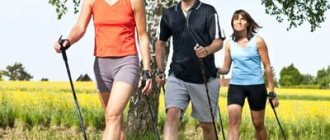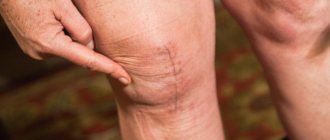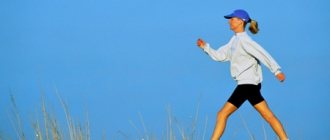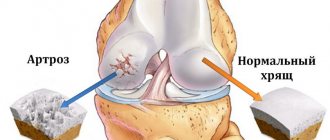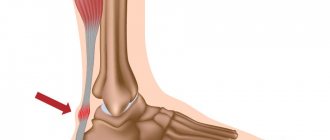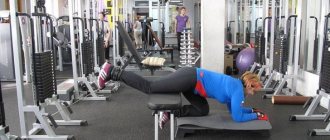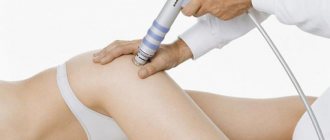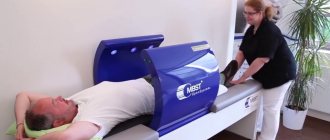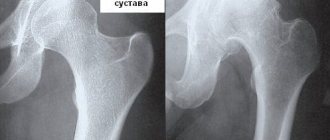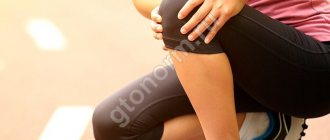Therapy for coxarthrosis (damage to the joints of the pelvis and hip) necessarily contains exercise therapy. In addition to special complexes, the patient can engage in certain sports. One of these is Nordic walking (NS). This technique helps strengthen muscles with minimal stress on joints. Is it possible to do Nordic walking for coxarthrosis as self-medication? You will find the answer in our article.
Coxarthrosis
Lifestyle with coxarthrosis
In addition to the basic recommendations on physical activity, nutrition, and water regime, you should choose the right furniture for yourself, or rather chairs or armchairs, so that the knee joints are lower than the hip joints.
The doctor will definitely advise you to walk. The duration depends on how you feel at the time of the walk. Shoes must be special orthopedic or a high-quality model with the correct comfortable sole, soft top, and without heels. For arthrosis of any joint in the lower extremities, high heels are contraindicated.
Proper nutrition
It is necessary to remove simple carbohydrates from the diet so as not to gain weight and not create additional stress on the joints. If arthrosis begins in the hip joint, it can also affect the knee joint, so you need to be on alert.
Products containing gelatin - jellied meat, fruit jelly - are of great importance. Gelatin helps joints receive the necessary nutrients to restore cartilage and bone tissue, in particular collagen.
Water regime - at least 1.5 liters of clean still water per day, not counting tea and compotes. Coffee should be avoided as it dehydrates the body and interferes with the absorption of calcium. As an option, drink a glass of plain water before a cup of coffee, but not more than once a day.
The doctor may prescribe additional medications to replenish the reserves of chondroitin and glucosamine in the body. These products must be taken regularly so that the nutrition of the cartilage is not disturbed. Physical activity will help speed up metabolism and ensure access of nutrients to the joint.
Therapeutic gymnastics and sports
You will have to give up professional sports with arthrosis of the hip joints if they are associated with strength loads: weightlifting, bodybuilding, long-distance running.
The risk of developing coxarthrosis increases in people who lead a sedentary lifestyle, as the hip joint receives less nutrition and oxygen. The tissues experience starvation and are gradually destroyed. To stop the process, it is necessary to regularly perform a set of exercises to develop bone joints. You can consult your doctor about what movements to do and how many times a day. The Internet describes the author's methods aimed at treating and restoring the functions of the hip joint: V. Gitt, S. Bubnovsky, P. Evdokimenko. There are many videos in the public domain with techniques for performing exercises for coxarthrosis of the hip joint. If any movements cause pain, you need to abandon them or perform them half-heartedly. After exercise, you should get a massage or take a warm bath to relieve pain and relax your muscles.
Exercise therapy programs are selected in such a way as to make the joint move, strengthen the muscle corset, tendons and ligaments. Movement provides blood flow, which supplies nutrients to the joint capsule.
- Nordic walking for arthrosis of the knee joint
Patients with coxarthrosis benefit from practicing yoga for several reasons:
- all movements are performed slowly, with elements of static load, which gently tones the muscles;
- Meditation during exercise helps relieve muscle and psychological tension.
Callanetics is a modern version of yoga - a set of 29 stretching exercises that are extremely uncomfortable to perform. Such movements do not occur in ordinary life, so at first they cause discomfort and pain. Callanetics is useful for people who are overweight. It is based on static movements, therefore it is indicated for people with heart problems in which increased physical activity is excluded.
For coxarthrosis of the hip joint it is not recommended:
- engage in fitness, as training involves sudden movements with a large amplitude, jumping, running;
- play football, because this sport is associated with increased stress on the lower limbs, which is undesirable;
- Alpine skiing is a traumatic form of physical activity.
It is not recommended to perform exercises during an exacerbation of the disease, when severe pain is felt. For high blood pressure and heart failure, it is recommended to give preference to static exercises, dosing the load.
Swimming
At stages 1 and 2 of the disease, it is useful to combine physical exercise with swimming. This sport reduces axial load and tones all the muscles in the human body. Depending on the degree of mobility of the joint, the swimming style is chosen:
- with good mobility, you can swim breaststroke, spreading your legs to the sides;
- if the joint has limited movement, choose freestyle.
In the third stage, it is difficult for a person to get to the pool, but he feels better in the water, since the body weight in the aquatic environment decreases and pain is felt less.
Hiking
Walking should be done several times a day, without overstraining the body and the joints themselves. The load is distributed evenly; if necessary, you must use a cane. The benefit of walking for coxarthrosis of the hip joint is to saturate the whole body with oxygen. Many doctors recommend doing breathing exercises while walking, which involves activating the diaphragm. Most people breathe only in the upper part of the lungs, the rest is not used, so the body initially receives little oxygen, and there is not enough for all processes.
Shoes must be specifically selected based on the structure of the foot. First, determine how the arch of the foot is located: to do this, you need to stand on paper with wet feet, then trace the outline with a pencil and show it in the store so that salespeople can help you choose comfortable sneakers. Comfortable shoes are not always helpful, as they do not prevent the foot from being in the wrong position. The right shoes, on the contrary, straighten the foot, reducing the load on the spine and joints.
Many patients enjoy Nordic walking for coxarthrosis of the hip joints. This is a kind of training for all the muscles of the body. Benefits of classes:
- 90% of muscles are involved;
- burns twice as many calories as normal walking;
- The muscles of the upper and lower extremities work simultaneously.
Walking with special support devices requires prior mastery of the technique. It is recommended to first watch the video, which clearly demonstrates how to correctly distribute body weight. For people with coxarthrosis, it will be easier to move with sticks, since part of the load falls on the hands.
Riding a bicycle and motorcycle
Cycling with coxarthrosis of the hip joints of 1st and 2nd degree on a flat surface is not contraindicated, since the joint is unloaded and works as best it can. It may be difficult to climb uphill, in which case you need to use the bike carefully and adjust the speed in a timely manner.
- Walking with arthrosis of the knee joint. Useful or not?
When riding a motorcycle, movement is replaced by vibration emanating from the engine. This is a kind of massage of the lower extremities. When traveling regularly, such as biker runs, you need to listen to your feelings. Perhaps long rides will be harmful, but short-term driving around the city will not harm.
Visiting the sauna
Physiotherapy is used in the treatment of arthrosis. The thermal method is one of the most useful. Here it is necessary to observe moderation. Optimal temperatures are up to 42 - 45 degrees. Steaming with coxarthrosis of the hip joint is not prohibited. The time spent in the sauna at temperatures up to 45 degrees is about 20 minutes. At temperatures up to 80 degrees – 10 minutes.
Thermal effects accelerate blood circulation in the vessels, facilitating the flow of nutrients into the joint capsule. Combine a bath with swimming and massage. The number of procedures per month is from 3 to 5.
Sex life
Sexual life with coxarthrosis is not stopped. The exception is stage 3 of the disease, in which movements in the joint cause pain. The most common obstacle is a depressed psychological state and fear of pain, which prevents you from focusing on your own feelings.
If hip arthrosis is diagnosed, you should be creative. It is necessary to choose the most comfortable position for sex and introduce your partner to the nuances of sensations. You need to look at intimate life as a way to get rid of pain. Mobility during sex should be limited, especially if it causes discomfort. Before sexual intercourse, you can use additional relaxing procedures: massage or warm bath.
Massage
Massage should not cause acute pain.
It is useful to combine massage procedures with water or gymnastics exercises. At the same time, they take vitamin complexes, vasodilators and anti-inflammatory drugs. Massage is practiced by chiropractors, restoring and strengthening the correct position of the spine relative to the hip bones.
The session is carried out using folk or pharmaceutical ointments, enhancing their penetration into the joint capsule using various techniques: tapping, rubbing.
After endoprosthetics, massage procedures begin to be performed after a rehabilitation period, when the patient is able to get back on his feet. This accelerates the growth of bone tissue into the artificial prosthesis material.
Surgical treatment of coxarthrosis
Surgery for coxarthrosis is usually indicated in the last stages, when organic changes are pronounced and conservative treatment methods are ineffective. With the help of endoprosthetics, osteotomy or arthroplasty, the anatomy and function of the joint are restored.
Methods of surgical treatment of coxarthrosis of the hip joint:
- Arthroplasty - the essence of this operation is to model the destroyed articular surfaces. The operation allows you to restore not only the supporting function of the injured limb, but also movement in the joint.
- Arthrodesis - During surgery, the bones are secured using a plate and screws in a functionally advantageous position. After such fastening, the bones grow together. The operation allows you to restore the supporting function of the affected limb, but not its mobility. Arthrodesis is indicated only in cases where other types of operations are impossible.
- Osteotomy - bones are cut to eliminate deformation, then secured in the correct position using various metal structures. The operation allows you to restore not only the supporting, but also the motor function of the joint, and relieve the patient from pain.
- Endoprosthesis replacement is an operation to replace a joint destroyed due to illness or injury with an artificial analogue (endoprosthesis). The endoprosthesis is similar in appearance to a real joint. It is designed to perform the same functions and withstand the same loads as a real joint.
Based on the type of hip replacement, endoprostheses are divided into:
| Unipolar (only the head of the hip joint is prosthetic); |
| Bipolar (total replacement, in which both the head of the femur and the acetabulum of the hip joint are replaced). |
According to the method of fixation, endoprostheses are divided into:
| an endoprosthesis with cementless fixation (the components of the endoprosthesis are tightly “inserted” into the bone, and then the prosthesis is fixed due to the fact that the bone grows into the surface of the endoprosthesis) - more popular; |
| Endoprosthesis with cement fixation (the prosthesis is fixed using special bone cement); |
| Hybrid endoprosthesis (the cup or stem is attached without cement, and the other component of the endoprosthesis is attached with cement). |
The materials from which endoprostheses are made are subject to strict requirements. This is naturally related to the specifics of their application. In a normal joint, friction occurs between the articular cartilages.
In a hip joint endoprosthesis, two friction surfaces can be made of metal alloys and high-strength polymers (metal, polyethylene, ceramics). The friction unit in the endoprosthesis is what interacts between in the artificial hip joint.
Hip joint endoprostheses can be divided into:
| metal-metal; |
| metal-polyethylene; |
| pottery-ceramics; |
| ceramics-polyethylene. |
Nowadays, the most common version of the friction pair is “metal - polyethylene”. This combination has a decent service life and provides good clinical results, proven by many years of experience in using this combination. The weak point of this combination is the wear of polyethylene.
Plastic wear products, entering the surrounding tissues, accelerate the loosening of parts of the endoprosthesis. Prostheses with such friction pairs as “metal-to-metal” and “ceramics-to-ceramics” are free from this disadvantage. Their high strength is coupled with minimal wear.
Indications for hip replacement surgery
The main indications for hip replacement surgery are the patient’s complaints and clinical and x-ray data. The patient’s complaints largely determine the indications for joint replacement:
| severe and constant (chronic) pain syndrome; |
| stiffness, severe limitation of movement in the hip joint; |
| disruption of a person’s daily activities, loss of ability to work. |
If the patient feels well and has no complaints, but radiologically he has grade 3-4. - such a patient does not need surgical treatment until complaints appear.
Diseases for which hip replacement can be performed:
| Osteoarthrosis of the hip joint (primary and secondary coxarthrosis); |
| Rheumatoid arthritis, arthritis associated with other systemic, autoimmune diseases; |
| Fracture of the femoral neck, fractures of the acetabulum, as well as their consequences (post-traumatic arthrosis and pseudarthrosis); |
| Hip dysplasia; |
| Avascular necrosis (Aseptic necrosis of the head). |
Therapeutic recommendations
Coxarthrosis is treated with courses of hyaluronic acid injections. Benefits of the procedure:
- Hyaluronic acid is a safe substance, since it is produced by one’s own body and is an integral part of synovial fluid, which is becoming less and less in the joint space, the processes of friction and cartilage breakdown are intensifying. Several injections restore the amount of fluid and reduce friction.
- It takes 1 – 2 courses per year to relieve constant pain.
Plasmaphoresis is a safe treatment method in which the patient’s plasma is injected into the joint, which triggers tissue regeneration processes. At the same time, you can not abuse painkillers, which negatively affect other organs and systems.
- Massage for coxarthrosis of the hip joint: rules of implementation, contraindications, self-massage
Patients are advised to periodically visit sanatoriums. Treatment at resorts is comprehensive. The climate, which helps reduce pain, is important. Salty sea water can open pores on the skin and replenish mineral deficiencies in the body. In addition, physical activity during swimming helps improve overall well-being. Sunlight stimulates the formation of vitamin D, which is necessary for the absorption of calcium.
What you have to forget about with coxarthrosis
Prohibited foods for coxarthrosis
In order not to worsen the situation, you will have to completely give up alcohol. This substance has a depressant effect on the nervous system, as the absorption of B vitamins is impaired. Vitamin B1 affects the condition and function of muscles, which are conductors of nutrients to the joints. With muscle spasms, the function and elasticity of blood vessels are disrupted, in which blood clots or cholesterol plaques can form.
Alcohol has a negative effect on the digestive system, especially on the liver and pancreas, which are involved in the breakdown of food. The proper nutrition of bone and cartilage tissue depends on how well the digestive organs work. The exception is tinctures, rubs or ointments made with alcohol. In small doses, alcohol has a warming effect, which does not harm the joints.
Therapy for coxarthrosis (damage to the joints of the pelvis and hip) necessarily contains exercise therapy. In addition to special complexes, the patient can engage in certain sports. One of these is Nordic walking (NS). This technique helps strengthen muscles with minimal stress on joints. Is it possible to do Nordic walking for coxarthrosis as self-medication? You will find the answer in our article.
Coxarthrosis
Benefits of CX
CX is understood as recreational walking with special poles. The point is that the sticks are an extension of the upper limbs, so when pushing them off the road, a person uses his arms and legs. SC is actively used to restore patients with:
- impaired metabolism;
- pathologies of the cardiovascular system;
- diseases of the respiratory organs;
- mental disorders;
- diseases of the musculoskeletal system.
SC is actively used for the treatment of coxarthrosis, since it allows:
- Use about 90 percent of the muscles in the human body.
- Unload the affected joint that needs development, but without heavy load.
- Correct your posture.
- Get rid of extra pounds. Scientists have proven that walking is 38 percent more energy efficient than regular walking. During a 30-minute walk, a person loses about 280 kcal.
- Provide the patient with moderate cardio exercise. The pulse rate during SC varies within 15 beats. A walking person experiences disappearance of shortness of breath, stabilization of breathing, strengthening of vascular walls and activation of the most important processes in the body.
Another undeniable advantage of CX is that it is as energy-intensive as running. Only the latter has many contraindications. For example, if a patient has been diagnosed with coxarthrosis of the hip joint, the joints will suffer from impact loads when running. Ultimately, this will lead to a deterioration in the patient’s well-being. The sticks used in SC minimize the negative impact of blows. CX is also one of the safest types of physical activity (provided that the person follows the safety precautions for using poles).
Like any therapeutic method, SC has certain contraindications. It may harm patients suffering from:
- hypertension or hypertensive crisis;
- acute infectious disease.
Also, it cannot be used during the rehabilitation period after abdominal surgery.
Hypertension
How to walk correctly with coxarthrosis
SH in our country is considered a relatively new method of treating coxarthrosis. Because of this, more than 87 percent of patients do not know how to move properly with poles. Experts highlight the most common mistakes:
- holding sticks in hands, lightly touching them to the asphalt;
- using sticks as canes or crutches;
- using sticks as additional support when moving.
In order for SC to have the required therapeutic effect, you need to push off the surface with sticks. In this case, the contact of the stick with the ground should be short but energetic.
CX principles:
- The right arm is bent at the elbow, slightly moved forward, resting on a clamped stick. The left arm is slightly lowered, the body is tilted. The main weight of the body passes to the right side of the body.
- The left foot takes a step forward, the foot lands on the heel. A smooth roll is made from the heel onto the toes. The weight shifts to the left side, but the right hand serves as a support.
- The weight shifts completely to the left side. The right leg and cane in the left hand push off the surface. The push is directed first down, then back. The left hand relaxes, the cane does not take part in movement.
- The right leg takes a step forward, the left arm is brought forward, rests on the stick, and the body weight is partially transferred to these limbs.
- With your left foot and right hand you push off from the surface and move them forward.
As practice shows, only a few patients can independently figure out how to walk correctly. Other patients need several sessions with an instructor.
Important! In order for walking to give a good result, the muscles need to be thoroughly warmed up before training, and then relaxed.
How often can I use CX? Like any complex of therapeutic exercises, SC requires systematic and regular implementation. WHO recommends the use of moderate exercise. Patients who have successfully mastered the technique of therapeutic walking can exercise five times a week for 30 minutes. The pace for the walk is selected individually.
A story from the life of a patient with arthrosis
One of my friends, who has been suffering from arthrosis for more than a year, was advised by his attending physician to try Nordic walking. But - he recommended a moderate regimen, with training for up to 30 minutes, 3 times a week. And, of course, a mandatory warm-up before classes. Here's what my friend says about this:
“When I ordered the poles, I wasn’t sure that it would help me. But I decided to take a risk. I learned about how to walk correctly from video lessons, and actually took online training. I didn’t really believe in success; at first I felt constrained. Walking with poles in the summer seemed strange to me.
Gradually I got involved, especially since I’m not the only eccentric in our park. Then I started to like this business. But I couldn’t even imagine how much easier it would become for me after just two weeks of classes! This is better than any ointments, the pain goes away, strength and the desire to walk come from somewhere.
Swelling also goes away, joints become stronger. I tried a lot, but walking with poles helped the best!” And this is a real life review about the effect of Nordic walking.
What equipment is needed
Many patients use hiking poles, ski poles, or simply improvised means for CS. This is a gross violation. The effectiveness of farming largely depends on the right equipment, which should be purchased only in specialized stores.
Therapeutic walking sticks are different:
- A combination of lightness and strength. They are made from high-strength aluminum or metal alloy.
- Shock-absorbing function, the ability to reduce the force of impacts that occur when the stick comes into contact with the ground. Aluminum performs this task well, but some manufacturers additionally equip their poles with a vibration compensator.
- Pointed, wear-resistant tips designed for walking on dirt or snow. They also have protective rubber caps that protect the poles from damage when coming into contact with asphalt or other hard surfaces.
- A reliable locking system that prevents the poles from spontaneously folding under the influence of body weight.
To once again protect yourself from injury, experts advise buying fixed poles. In addition to this element, proper CX equipment consists of:
- special gloves;
- trekking socks with stitched heels;
- comfortable sports shoes.
Shoes should be loose and not restrict movement.
Walking and Walking
Is race walking and walking beneficial for coxarthrosis? As practice shows, the therapeutic effect of these types of exercise therapy is somewhat lower than that of SC. But despite this, these methods allow:
- keep joints mobile, protect them from damage;
- maintain muscle tone, prevent the development of malnutrition;
- maintain natural ligamentous elasticity;
- improve blood circulation;
- activate metabolism and nutrition of joints.
Race walking
In addition, leisurely walks have a positive effect on the central nervous system and strengthen the entire body. Due to stress, a person develops muscle and vascular spasms, and hormones that destroy cartilage enter the blood. Walking strengthens the spine, minimizes the development of coxarthrosis and gonarthrosis (damage to the knee joint). Walking also has a positive effect on the functioning of the gastrointestinal tract.
Gonarthrosis of the knee
The initial stage of coxarthrosis allows you to walk for a long time. If the disease is advanced, it is better to minimize exercise therapy.
Note! Hiking and running errands are two different things. If you have coxathrosis, it is strictly forbidden to lift weights, run or walk until acute pain occurs.
Clinical symptoms
The main signs of coxarthrosis:
- feeling of stiffness in the joints;
- gait disturbance;
- limitation of range of motion.
A characteristic symptom of the pathology is pain in the groin area when trying to spread your legs wide apart.
The presence, intensity and frequency of pain depends on the severity of the disease.
- Coxarthrosis of the first degree is characterized by minor pain that occurs after being in an uncomfortable position, during long or fast walking, or active physical work. The pain is localized in the inner thighs and can radiate to the buttocks, knee joints or lower back. After a long rest, the discomfort disappears.
- Coxarthrosis of the second degree is an actively progressive stage. The pain syndrome increases, occurring not only during movement, but also at rest. Night attacks are typical, during which a person has to search for a long time for a comfortable position in which the symptoms are felt less severe.
- With third-degree coxarthrosis, the patient often loses the ability to move independently. The reason for this: bilateral atrophy of the femoral, gluteal and calf muscles due to dystrophic processes. The pain bothers me almost constantly, causing long-term insomnia. Due to weakness of the muscle walls, the pelvis deviates and the lower limbs become shorter. The heads of the femurs expand, the joint spaces almost completely close. The image reveals large areas of bone growths.
How to climb stairs
For people suffering from coxarthrosis, walking up stairs brings severe discomfort. To at least slightly reduce the intensity of pain, you can use a cane. How to move up the stairs correctly in this case?
- Use your free hand to hold onto the railing.
- When climbing, place your healthy limb and cane on the next step. Leaning on the latter, pull up the affected leg.
- When going down, place the cane and the sore limb on the bottom step, and only then the healthy one.
- Make sure the cane and leg are in one line.
When climbing stairs, you can use an extension step. This will make your gait slower, but more confident.
Correct walking with a cane
For arthrosis of the hip joint, walking with a cane can be used. The cane reduces the load on the diseased joint by 19-38 percent and slows down the destructive process. But the cane also needs proper use. First of all, you need to choose it correctly. It should be equipped with a comfortable, durable and non-slip handle, sufficient support area and a rubberized tip.
The length of the cane is also very important. To calculate it, you need to measure the distance between the wrist of the lowered hand and the floor. In this case, the person must be wearing the shoes in which he/she will be engaged in SH. If this parameter is selected correctly, when leaning on the cane, the forearm should deviate from the vertical axis by 20 degrees.
Correct use of the cane:
- Hold the object with the hand opposite the side of the affected joint.
- Bring the cane forward at the same time as the affected limb: this will help transfer body weight to additional support.
Cane
Doctor's advice - how to avoid arthrosis of the hip joint
There are 230 joints in our body. But how little we know about them and how rarely we care. The hip is the largest. And the main burden falls on him (literally). Each joint (whether large or small) has its own “shock absorber” - a cartilage layer. It is this that gives freedom of movement, distributing the load when walking and protecting bones from destruction. Cartilage works like a wet sponge. Only it is not water that is released from it, but a joint lubricating fluid, which forms a protective film on the surface of the cartilage and allows the connecting bones to easily slide over each other. The thickness of the protective film depends on the degree of load on the joint. The greater the pressure, the thicker the layer.
But sometimes our joints begin to malfunction: they creak, hurt, or even refuse to work at all. Natalia Karnitskaya, a surgeon at the 19th central district clinic in Minsk, notes the progression of deforming arthrosis of the hip joints: “Coxarthrosis most often affects middle-aged people (after 40 years), mainly men.”
The first bells
It’s a pity that when we feel the first discomfort, we don’t immediately run (while we still can) to the doctor. Then, having lost time, they are forced to agree to a very difficult operation or crutches.
But everything can be different if you don’t delay your visit to the doctor. It must be said that the first signs of coxarthrosis appear several years before the onset of the most critical stage. Initially, pain in the hip joint is rare and short-lived. They usually appear after unusually heavy loads, long walking, heavy lifting, hypothermia or a change in weather. Sometimes for no apparent reason. But, as a rule, they pass quickly, without requiring special attention. Gradually the pain becomes more frequent and intensifies. They go to the groin and knee. And they already let you know with any movement - walking, turning the body, getting out of bed or chair. It also hurts to lie on your side. The person begins to limp, falling on his sore leg. The thigh muscles also atrophy.
Coxarthrosis in the last advanced stages is already a serious pathology of the musculoskeletal system. And you can’t do without endoprosthetics surgery. An artificial prosthesis is inserted in place of the damaged joint. Technically this is a very complex procedure. Due to the proximity to the diseased joint, the pelvic organs also begin to suffer. Hence both female and male impotence.
Don't let it dry out
Why does a joint fail? Because for various reasons the properties of the joint fluid change - it becomes viscous and thick. Without proper lubrication, cartilage begins to dry out. Its surface becomes rough and cracks. Because of this, the cartilage begins to thin out, unable to withstand the increased friction during movement. The distance between the connecting bones gradually decreases. The pressure on them increases, which accelerates their deformation.
There are many causes of coxarthrosis. This is a circulatory disorder or infection of the joints, congenital dislocation or injury to the pelvic bones, hormonal changes, and heredity. Excess weight and a sedentary lifestyle (especially standing work) or, conversely, too much stress during sports (jumping, running, lifting weights) are not good for the hip joints.
All means are good
In the initial stages, treatment is carried out without surgery. First of all, medications are used: vasodilators, muscle relaxants (muscle relaxants), restoring cartilage (chondroprotectors). Hormonal steroids are also prescribed if necessary.
All kinds of ointments, lotions, and compresses are also effective. But not because they act on the hip joint itself - it is located deep under the skin, fatty tissue and muscles. The positive effect lies in the process of rubbing or warming, during which blood circulation improves, and sometimes painful muscle spasms are relieved.
Good results for deforming arthrosis of the hip joint are achieved by all kinds of physiotherapy (UHF, electro- and magnetic therapy, laser, ultrasound) and massage.
Sometimes doctors also resort to traction of joints using a traction apparatus or manually. This is one of the few procedures that can separate the connecting bones of the joint and reduce the load on them.
Unfortunately, today there is no diet that could alleviate the course of coxarthrosis. The only thing that can be helpful is weight loss. Which will accordingly reduce the load on the hip joints. The less a person weighs, the easier it is for him to tolerate coxarthrosis. And to reduce the load on the sore joint, walk with a cane.
Joints, and especially sick ones, need movement. With coxarthrosis, it should be smooth and calm. If the load is strong, the diseased cartilage will begin to deteriorate even more intensively. But the absence of movement, the creation of absolute rest, leads, paradoxically, to even more accelerated degradation of the diseased joint. Therefore, give preference to exercises that strengthen muscles and improve blood circulation in the pelvis. Did you feel pain? Stop exercising immediately. For coxarthrosis, it is useful to swim (especially in salt water pools or in the sea) and ride a bicycle.
By the way
If you have to stand while traveling in transport, grab the crossbar with both hands and stand on your toes, thereby absorbing the shock to your hip joints when shaking. At home, you can “stand” on the horizontal bar. Its crossbar should be at such a height that you can reach it while standing on your toes. Slowly raise and lower your heels to the floor.
Gymnastics from Natalia Karnitskaya
These exercises are useful for any degree of coxarthrosis.
Exercise 1.
Lie on your stomach, place your arms under your head or along your body. Place a small pad or cushion under your feet. Relax as much as possible. Rolling on your stomach, gently rock your hips left and right. The range of movements should not exceed 2 - 3 cm. Do not strain your muscles or try to lift your pelvis.
Exercise 2.
Lying or reclining on your back, stretch your legs out and slightly apart, alternately turning them outward and inward. The range of movements is extremely small - no more than 0.5 - 1 cm. It would be good to put a small pillow under your knees.
Exercise 3.
Sit comfortably. Keep your knees shoulder-width apart and your feet flat on the floor. Bring your knees in and out easily and without tension. The range of movements is 0.5 - 1 cm. Hands can be kept on your knees.
Help "SB"
To check if you have coxarthrosis, lie on your back, pull your leg towards your chest and try to rotate your shin inward. You can do this yourself or with the help of your family. If the joint is affected, it will be painful to do this, and the angle of bend of the leg and rotation of the shin will be limited.
Council "SB"
To temporarily relieve pain, apply cold water to the sore area for a few minutes or pour cold water on your feet.
Photo by the author.
Soviet Belarus No. 115 (24252). Tuesday, June 25, 2013.
Bottom line
Health-improving exercise therapy for coxarthrosis is an excellent type of physical activity that contributes to a speedy recovery of the patient. To increase the therapeutic effect, the patient needs to walk at a moderate pace. The duration of walks depends on the stage of development of the disease. To engage the maximum number of muscles and activate metabolism, you need to use special sticks.
Before you start using CX, you should definitely consult with your doctor and take a training course.
The main method of treating joint damage is. Loads are calculated based on the patient’s physical condition and the degree of illness.
Moderate walking for arthrosis of the hip joint is a therapeutic necessity and is available to all categories of patients. Often this is an obligatory component in a complex of therapeutic exercises.
Read more about Nordic walking for this illness
Nordic walking is extremely popular now! A special type of walking with poles has already captivated more than 14 million people around the world. The benefits of such technology are enormous, and harm from it is extremely rare. Usually when technology and rules are violated. This type of activity is suitable for the elderly, young, sick and healthy.
Medical experts specializing in arthrosis and arthritis say that at the very beginning of therapy, during exacerbations, diseased joints require more rest. But gradually, as treatment progresses, you should give them a load. And walking, especially “Scandinavian style”, is great for this.
It is still better to select the load and type of activity for arthrosis and coxarthrosis with the help of specialists. An experienced doctor will always help with this issue. He will choose the optimal activities, taking into account everything - the nature of the lesion, the degree of neglect of the disease, the activity of inflammation, general physical fitness, the wishes of the patient and other important factors.
Any walking, in comfortable shoes, in nature and fresh air, is irreplaceable if you are predisposed to this problem. First of all, as a prophylactic agent that protects against future joint pathologies.
Is walking beneficial for coxarthrosis of the hip joint?
Walking is a panacea for almost all health problems. This is the best prevention - it has a positive effect on cardiac activity and the system as a whole, and normal digestion is, in principle, impossible without physical activity. And this effect can be seen throughout the body.
Is walking beneficial for coxarthrosis? Of course – this is exactly how every competent specialist will answer. But before starting classes, you need to undergo an examination, get an accurate diagnosis and recommendations.
Each treatment has its own limitations and nuances, which should be known before starting classes, so as not to harm yourself even more.
After all, arthrosis of the hip joint is a complex disease that in advanced cases leads to disability.
What are the features of the therapeutic load?
Walking with coxarthrosis causes more stress on the joints than staying in a horizontal position, which can accelerate the process of cartilage destruction. At the same time, complete absence of movement will not solve the problem.
The bottom line is that when moving, metabolism accelerates, blood supply improves, which means nutrients are delivered faster to problem areas. It is the lack of nutrition of joint tissues that is one of the main reasons leading to their diseases.
In addition, movement will help maintain muscle tone and prevent cartilage tissue from losing elasticity. These are the main goals pursued by exercise therapy:
- maintain mobility;
- increase hemodynamics, that is, blood circulation;
- activate regeneration processes in the body.
Walking is important even with grade 3 arthrosis of the hip joint.
- But with this diagnosis, you should refrain from hiking for many kilometers. You can’t carry heavy objects or bags, but taking a walk near your home is a must.
- In this case, a visit to the pool is recommended - swimming reduces the load as much as possible. But, unfortunately, the last stage is often an indication for surgical intervention.
Long walking with coxarthrosis is possible only in the initial stages of the disease. But this does not mean that it should be excluded completely.
In any case, you need to listen to your feelings, mainly to the sore spot. It is attention to yourself and your body that allows you to avoid major health problems in the future.
See a doctor urgently!
True, at the initial stage, when it is best to begin treatment, pain in the hip joint may be mild. That is why patients are in no hurry to see a doctor right away, hoping that the pain will go away on its own.
Question answer
Does arthrosis occur in all joints?
And this is the most important and common mistake, which leads to loss of time and destruction of the joint. Experts never tire of repeating: as soon as pain appears in the hip joint, do not hesitate, go to an experienced specialist who will not only determine the degree of damage to the joint, but also prescribe the optimal treatment method.
In the initial manifestations of the disease, its basis is unloading the affected joint (without long walking, standing and frequent climbing stairs), physical therapy aimed at improving joint mobility, physiotherapy, acupuncture, massage.
In the acute period of coxarthrosis, as well as in its advanced stage, specialists prescribe the patient non-steroidal anti-inflammatory drugs, vasodilators, muscle relaxants that relax and eliminate tension in the muscles surrounding the diseased joint, and, if necessary, intra-articular injections of hormonal steroid drugs.
Experts assign a special role in the treatment and prevention of the development of coxarthrosis (regardless of its stage) to chondroprotectors, which affect the very nature of arthrosis and promote better nutrition of cartilage. These biologically active drugs safely eliminate slowly smoldering chronic inflammation in the joint and ultimately make it possible to reduce the intake of painkillers that are not harmless to the body or to abandon them altogether. The sooner you start taking them, the better the result will be.
By the way
To make an accurate diagnosis of coxarthrosis, one cannot do without: X-ray examination of the hip joints, ultrasound examination of the pelvic area, and, if necessary, without magnetic resonance or computed tomography, which make it possible to identify the disease at the very initial stage of development, when it is not yet accompanied by pronounced symptoms .
What can't you do?
It is not advisable to start running if you have hip problems. Moreover, already at grade 2 this is a clear contraindication. When running, the load increases 5 times.
- Under such pressure, the healing effects will simply not have time to combat tissue destruction.
- Excessive load inevitably leads to a stressful state, which will most likely lead to new damage.
Therefore, it is necessary to exclude the corresponding sports - running, football, tennis.
You cannot endure and overcome pain. If movements are accompanied by pain, then something is going wrong. Contact a specialist to adjust your treatment program.
What else to treat?
In addition to regular walking, a real effective remedy for coxarthrosis of the hip joint is Nordic walking. Using sticks has several undeniable advantages:
- Nordic walking for arthrosis provides additional points of support to reduce the load on the joints;
- muscle work is activated, the back and abs are strengthened;
- promotes weight loss, which is also necessary during treatment;
- strengthens the body as a whole.
Thanks to this, we reduce the effect of negative factors and enhance positive ones. This is the essence of any treatment. This method is available to almost everyone and is an excellent prevention.
Any actions aimed at treating a particular disease should be performed only with the permission or advice of the attending physician!
It would not be superfluous to ask him a question: is walking useful for arthrosis of the hip joint in the case of the patient who applied? Each case is individual and may be accompanied by other contraindications.
The doctor may decide that in a particular medical history it would be more correct to prescribe swimming or a combination of walking and visiting the pool. You cannot self-medicate, and the main thing is to remember that the disease can be defeated by following the recommendations and believing in yourself.
If you want to get more information and similar exercises for the spine and joints from Alexandra Bonina, check out the materials on the links below.
Additional useful information:
See more useful materials on my social networks:
| | | | |
Denial of responsibility
The information in the articles is for general information purposes only and should not be used for self-diagnosis of health problems or for therapeutic purposes. This article is not a substitute for medical advice from a doctor (neurologist, therapist). Please consult your doctor first to know the exact cause of your health problem.
Content
Nordic walking: how it is useful and to whom it is indicated.
Nordic walking: how it is useful and to whom it is indicated.
Today, a type of physical activity such as Scandinavian (or Nordic) walking, which is based on a certain movement technique using poles reminiscent of ski poles, is gaining increasing popularity.
How is such walking useful? Who is it shown to?
Let's learn a little about Nordic walking: According to one version, this type of physical activity was first described by a native of Finland, Marco Kantaneva. Walking and running with poles were used by skiers as training exercises outside the winter season. In addition to helping athletes prepare for competition, Nordic walking has been proven to have health benefits for people of all fitness levels. Walking with Nordic poles is a great way to strengthen your cardiovascular system, tone your muscles, and get a boost of vigor and energy.
Let's look at some of the features of this activity: You move with additional weight. The poles weigh little, but after 30–60 minutes even this small weight will seem much heavier than at the beginning of the walk. This means that the load on the muscles is greater than during normal walking. Every step you take, you swing your arm. This means that, in addition to the legs, the shoulder girdle will work. For people with osteochondrosis and simply a sedentary lifestyle, this is a big plus: blood circulation throughout the body improves, muscles not involved in normal life are trained. For breathing, raising your arms at each step will be very useful - the chest expands, and as you lower your arms, it narrows. Thanks to this, the lungs are better ventilated. A plus to this will be an increase in lung volume due to increased load. As a result, increased endurance and better saturation of tissues with oxygen. Don't be alarmed by the word "Increased load" in the previous paragraph. You can calmly control the speed and activity of movements. Relying on poles significantly increases your stability on the road. Uphill climbs are easier. For people who have begun to develop diseases of the musculoskeletal system, Nordic walking (it is also called that) will be much easier than usual. This is due to the fact that the body weight is redistributed due to support on sticks. And one more advantage associated with poles - when you get up to rest, you can lean on the poles and throw a significant part of your weight onto them. This significantly reduces the load on your back, which you will immediately feel. There are no contraindications for Nordic walking.
Nordic walking is considered one of the safest sports. The Nordic walking technique is simple and does not require any special skills or abilities. This type of activity is very effective in terms of weight loss. People who are losing weight are often advised to run. But active running can be hampered by excess weight, unpreparedness of the cardiovascular system, and problems with the joints and spine. But everyone can walk. Here Scandinavian or Swedish walking with poles helps a lot. In terms of calorie consumption, this activity will be almost equivalent to jogging. In addition, you can walk many times longer than you can run. Answering the question of what Nordic walking is, it is worth saying that it is not some special Nordic, Swedish or Finnish walking. All people move the same way - on two legs. It's just that here you use the support of the stick with every step. In our country, walking with ski poles is more common, because people do not always have the opportunity to purchase special equipment for this purpose. And our winter is long, there is a lot of snow - ski poles are quite suitable for such conditions. True, if you knock them on the asphalt, it will be uncomfortable. There is a lot of talk today about the benefits of Nordic walking. Some go with ski poles, some take 2 canes, and some buy exclusively expensive equipment from leading brands.
So, what are the benefits of Nordic walking: Improved blood circulation. Shoulder girdle training Prevention of osteochondrosis: strengthening muscles, reducing the load on the spine. The possibility of long walking increases all its beneficial properties many times over, compared to running. But on the contrary, there are fewer negative factors.
Nordic walking for pensioners is one of the few sports that they can safely practice without risk to health. Doing Nordic walking is good for the respiratory system - it has been proven that the lungs are trained and ventilated. And this ensures the prevention of respiratory infections. A corollary from the previous point is blood oxygen saturation. O2 molecules will be delivered to every cell of the body. A 40-60 minute walk at an average pace is enough. The rehabilitation benefits have been proven (and this is fully applied today). Nordic walking is used as rehabilitation after fractures of the hip, knees, and lower legs. People walk with poles as additional support - which provides better stability and reduces the load on the healing bones.
And remember that your task is to regularly and happily take walks with poles at distances that are comfortable for you, and not to set world records, bringing your body to exhaustion!
Take care of yourself! Be healthy and always remember: movement is life!
Arthrosis is a disease of the elderly...
“How long can you walk with arthrosis of the hip joint?” This may occur in those who know firsthand about this disease. According to statistics, arthrosis is an age-related disease, and it mainly affects women over forty years of age; after 60 years, arthrosis of the hip joint, or coxarthrosis as it is otherwise called, occurs in one out of three patients who seek help. After 70 years, arthrosis of the hip joint already occurs in more than 70 percent of referred patients. This is mainly due to the aging processes occurring in the body of older people.
Such a pain!
You cannot envy a person suffering from coxarthrosis: severe pain in the hip joint, which can radiate to the knee, the front and side of the thigh, the lower back and even the groin, sometimes interferes not only with walking fully, but also with sitting and lying down.
Eventually it gets to the point where, due to excruciating pain, patients can no longer move independently, which is why they are forced to use special devices - canes, crutches, walkers.
The source of trouble is the destruction of cartilage tissue. At first, microcracks form in it. Over time, as arthrosis progresses, bone growths (osteophytes) form in place of the thinned cartilage tissue. Changes also occur in the tissues surrounding the joint: thickening of the joint capsule, inflammation of the tendon bursae, spastic muscle contraction. The thigh muscles atrophy - they dry out and decrease in volume. This may lead to shortening of the leg.
Support point. What joint diseases threaten young people? More details
Moderate approach in everything
In addition to walking and physical therapy, to prevent the development of coxarthorosis, you must also adhere to proper nutrition, use physiotherapy, massage, and you can also use the help of traditional medicine. Skiing is also appropriate for arthrosis of the hip joint. The main thing is to ensure that there are no sharp jolts or impacts on the joint. If your physical condition allows and only the initial stage of arthrosis is present, then for the purpose of prevention, light jogging is acceptable, but it should not be long and should not cause excessive strain. Another remedy that helps relieve joint tension is swimming. Swimming in sea salt water, rich in minerals and trace elements that penetrate into the joint and heal it from the inside, is especially beneficial. But you should always remember the golden mean. Moderation is necessary in everything; do not overdo it in achieving a positive result, because this can only bring harm. By following all the necessary recommendations, leading a healthy lifestyle and maintaining physical activity, you can forget about sore joints for a long time.
Bibliography:
- https://nogostop.ru/taz/rekomendacii-pri-artroze-tazobedrennogo-sustava.html
- https://lechisustavv.ru/lechenie/lfk/10920-skandinavskaya-hodba-pri-koksartroze-mozhno-li-zanimatsya.html
- https://osteohondrosy.net/khodim-peshkom-pri-koksartroze.html
- https://tazobedrennyj-sustav.com/skolko-mozhno-hodit-pri-artroze-tazobedrennogo-sustava.html
